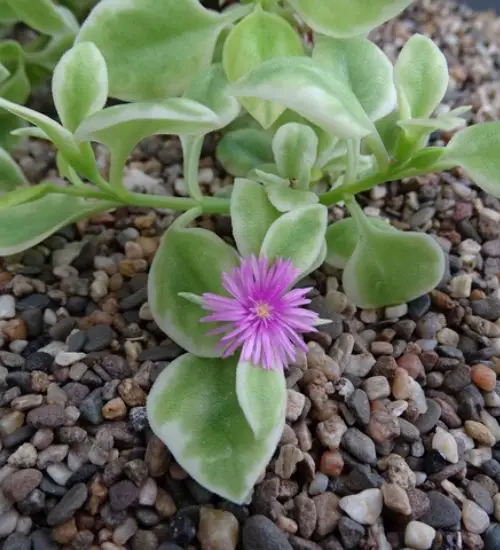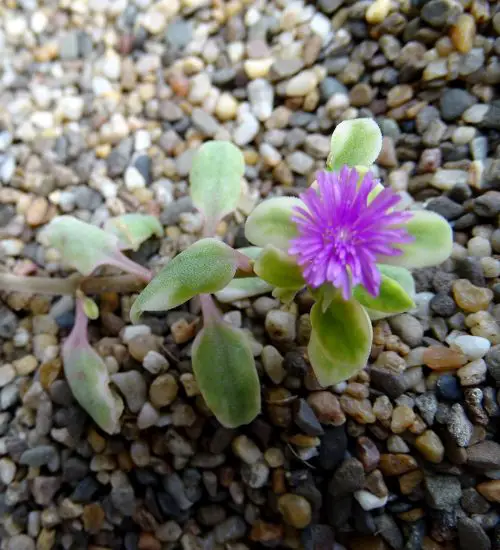Sun: full sun
Water: Typical water needs for a succulent
Temperature:
Winter Survival: Not cold hardy
Propagation: cuttings, seeds
Flower: in the Spring or Summer
Flower Type: purple
Toxic: Generally non-toxic to humans and animals
Dormant: winter
Space Requirement:
Common Problems: Plants may rot if overwatered
Where to buy Aptenia lancifolia?
Basc Care for Aptenia lancifolia
Watering
Watering for Aptenia lancifolia is a simple task. It requires Typical water needs for a succulent.
Can you water your succulent more than what its need? The answer is yes and no. In extreme conditions, you can water your plants more often when you notice the soil is completely dry.
Fertilizing
Only feed this succulent during its active growing seasons which means winter. Use the right fertilizer applied in the right amounts. Applying half-strength balanced fertilizer every month or so is recommended for optimal results.
Do not fertilize during winter as the plant is dormant.
Sun & Location Requirements for "Aptenia lancifolia"
Aptenia lancifolia requires full sun for optimal growth and health. Place your succulent in a sunny spot in your garden or on a windowsill to ensure it's getting enough light. You'll know that the succulent is receiving enough sunlight if its leaves are bright green and firm.
As per this succulent profile, it is only able to stay healthy when the environment temperature is above the range of %temperature_label%.
In order to protect Aptenia lancifolia from freezing temperatures, it is important to provide adequate insulation and drainage. A layer of mulch or gravel will help protect the roots by keeping them warm during cold weather. In addition, protection from wind and sun exposure can help reduce the chances of frost damage.
Propagation
One way to propagate Aptenia lancifolia is by cutting
Propagating Aptenia lancifolia from seeds is a great way to produce new plants without relying on cuttings or divisions. It's important to look for healthy, dark and plump seeds that are slightly sticky when touched. The soil should be pre-mixed with well-draining potting mix, before evenly sowing the seeds and pressing them into the surface. To ensure successful germination, gentle misting of the soil should be done and placed in indirect light.
Toxicity

Aptenia lancifolia is generally non-toxic to humans and animals. However, it is important to be aware that certain parts of the plant may contain toxins which can cause mild skin irritation. It is advised that you keep the plants away from small children or pets, as they may unknowingly ingest them and suffer ill effects.


